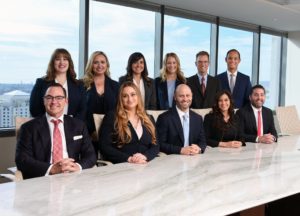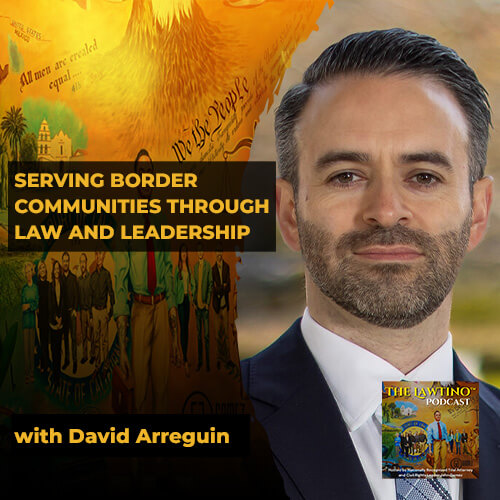A person was killed in an accident on an HOV lane ramp along I-15 in Escondido allegedly caused by a speeding driver. The accident occurred during the afternoon, when the driver of a Jaguar XK6 allegedly ran a red light while traveling at freeway speeds and smashed into a Toyota Avalon broadside. A female front-seat passenger in the Avalon, who wasn’t wearing a seat belt, died at the scene. The woman’s brother-in-law stated that she had been on her way to pick up her husband of 45 years at the bus station when the accident occurred. The 81-year-old male driver of the Jaguar was injured in the accident and transported to the hospital in critical condition. His passenger also suffered serious injuries.
Speeding, which is defined as exceeding the posted speed limit or driving too fast for the conditions of the road, is a major problem on U.S. roadways, accounting for more than 9,000 deaths in 2018. This equates to about 25 percent of all traffic-related deaths across the nation, according to the Governor’s Highway Safety Association. In San Diego, 2016 statistics reveal that 2,245 people were injured or killed in accidents involving speeding in that single year. If you’ve lost a loved one due to a speed-related crash in San Diego, you may be eligible for compensation through a wrongful death claim. An experienced car accident attorney can provide more information about the process involved in obtaining this type of compensation.
The Dangers of Speeding
Speeding not only reduces your ability to maintain control of your vehicle, but also increases the severity of injuries and damage to the vehicle when an accident occurs. Popular Mechanics notes that the issue with speeding is simple math: two cars are traveling in the same direction, one at 70 miles per hour and one at 100 miles per hour. Both drivers see an obstacle ahead and slam on their brakes at the same time. The car traveling at 70 miles per hour stops just short of the obstacle, but the car traveling at 100 miles per hour hits the obstacle.
The reason why has to do with energy. The car traveling at 100 miles per hour has more than twice the kinetic energy as the vehicle traveling at 70 miles per hour. The slower moving car was able to stop, but the faster moving vehicle was not even slowed down to 70 miles per hour by the time it struck the object.
Some of the problems that speeding creates include:
- More distance required to come to a safe stop. The distance required to stop not only hinges on speed, but on the size of the vehicle, the vehicle’s braking capabilities, and the weather conditions. The larger the vehicle, the faster it is moving, and the wetter the road, the more distance is needed for stopping.
- Less time to perceive a danger and react to it by braking. Perception of danger is the first factor in coming to a safe stop. Second, the driver must take action. Third, the vehicle’s braking system must be in working order and respond appropriately.
- Reduction in the effectiveness of the vehicle’s protective features such as seat belts and airbags. A vehicle’s protective features are designed to function properly at normal driving speeds. Because the higher a vehicle’s speed, the greater the impact in a crash, these features may not function as intended.
- Rollover accidents. Topheavy vehicles—such as trucks, vans, or SUVs—are at particular risk of rollover accidents around curves when speeding due to their high center of gravity and a reduced ability to control the vehicle at higher speeds.
- Financial costs. Speeding leads to an increased risk of traffic tickets, increased insurance premiums, and legal costs if an accident should occur.
- Cost to society. Accidents cost society as a whole by imposing speeding-related injuries, which not only cost money to treat, but also lead to loss of productivity.
Why Do People Speed?
Most people are at least somewhat aware that speeding is dangerous. So why do they do it? Some of the reasons drivers choose to speed include:
- Running late. One of the most commonly mentioned reasons drivers give as to why they were speeding is that they were late for school, work, or another engagement.
- Distractions. Driving distractions draw your focus away from safe driving. One of the aspects of safe driving that often gets ignored due to distractions is controlling one’s speed.
- Traffic congestion. You would think that a street packed with traffic would cause people to slow down, not speed up. However, traffic congestion is one of the top triggers of aggressive driving behavior, including speeding. Drivers get angry at the traffic and attempt to get through it faster by changing lanes or racing through intersections. Remember that speeding is not just driving faster than the posted speed limit, but also driving too fast for conditions, which includes traffic.
- Intentional risk-taking. Particularly for young male drivers with peers in the vehicle, it is often tempting to seek thrills by driving fast.
- Anonymity. In the relative seclusion of a vehicle, the driver is anonymous. For some drivers, this anonymity makes them feel free to exhibit risky behaviors that they would otherwise avoid in situations that involve family members and peers.
- Alcohol impairment. Drunk driving significantly compromises the skills needed for the safe operation of a motor vehicle, including the ability to control speed and to make good decisions.
- Fatigued driving. The impact of fatigue on driving is very similar to alcohol impairment in that a drowsy driver may have trouble controlling speed or using good judgment and may also be prone to distractions.
- Disregard for others and the law. For some people, the idea of rule-breaking just feels good. Often, these individuals speed or otherwise engage in risky behaviors without considering how their choices may impact others.
Portrait of a Speeder and the Scene of a Speed-Related Accident
While it’s true that anyone can exceed the posted speed limit, there are certain categories of people who are more likely to speed, as well as places and times where speed-related accidents are more prevalent. The Federal Highway Administration has conducted extensive research into these trends, and the results were as follows:
The Speeder…
- Is usually male. Males of all ages are more likely to cause these types of accidents due to speeding than females are.
- Is generally under 25 years old. Younger male drivers represent the greatest percentage of drivers involved in fatal speed-related accidents. The National Highway Traffic Safety Administration reports that, in 2017, one-third of the male drivers in the 15 to 20 year old age group who were involved in fatal motor vehicle accidents were speeding at the time of the crash.
- Is frequently driving under the influence of alcohol. According to the National Highway Traffic Safety Administration report, 37 percent of drivers involved in speed-related accidents in 2017 were alcohol-impaired.
- Has often been previously cited for speeding or has had his license suspended in the past. Roughly a quarter of all drivers involved in speed-related crashes had a prior reported history of traffic offenses and/or license suspensions.
- Is commonly distracted at the time of the crash. The distraction may include texting or other cell phone use, visiting with passengers, or any number of other driver distractions that have drawn his focus away from the task of driving.
The Scene…
- Is often dark. More speed-related crashes happen at night, most commonly between the hours of midnight and 3 a.m.
- It’s usually the weekend.
- It is most often summertime. The summer months and the holiday season are the most likely time for speeding-related crashes to occur.
- Is frequently in a section of the roadway where there is a curve. Crashes due to speeding are more prevalent on curved segments of the road than they are on straight sections.
- Is commonly on a narrow road where there is a higher posted speed.
Teen Drivers and Speeding
According to information from AAA, one of the top deadly mistakes made by teen drivers is speeding. Teen drivers’ inexperience is already an issue, with motor vehicle accidents being the leading cause of death for U.S. teenagers. Teenage drivers are more likely to experience a car accident than any other age group. In a survey, about half of teenage drivers stated that it was acceptable to drive 15 miles per hour over the speed limit. Roughly the same percentage of teens participating in the survey believed that it was acceptable to drive 10 miles per hour over the speed limit in a residential area.
The risk of speeding, and crashing, increases for teen drivers with every teen passenger that they have in the vehicle with them. Half of all fatal crashes involving 16-year-old drivers with three or more passengers in the vehicle involve excessive speed—a fact that has some experts stating that society needs to consider speeding as dangerous as alcohol-impaired or distracted driving for teenagers and devote the same attention to preventing it.
One of the issues behind teen speeding is that it is not always an act of intentional risk-taking, but may actually reflect inexperience. Teens often struggle with knowing the appropriate distance at which to follow other cars, as well as how to manipulate their accelerator and brakes in stop-and-go traffic.
If You Lost a Loved One in a Speed-Related Crash
If a loved one died in a speed-related crash, you are likely facing both unexpected grief and unexpected expenses. A wrongful death lawsuit may provide the compensation you need to cover those expenses. A wrongful death lawsuit may be filed by family members of the deceased, including the deceased’s:
- Spouse or domestic partner;
- Children;
- Grandchildren if the deceased’s children are also deceased;
- Other minor children who depended on the deceased for at least 50 percent of their support; and
- Parents of a deceased minor child.
The damages that you may recover from a wrongful death lawsuit include funeral and burial expenses, the income that the deceased would have earned had they survived, and loss of companionship – the love, relationship, and enjoyment lost from losing a loved one. Wrongful death actions often go hand-in-hand with survival actions, which involve obtaining compensation for the deceased’s estate for damages that the deceased experienced after the accident but before death, including medical expenses related to their final injury and the victim’s pain and suffering that resulted from the injuries they experienced. In some cases, where the at-fault party’s negligence and recklessness were egregious, a court may also award punitive damages.
Contact Gomez Trial Attorneys If You Were Injured in a Speed-Related Crash

For every person who is killed in a speed-related crash, many more suffer serious injuries. If you were injured by a speeding driver, you may also be eligible to receive compensation through an insurance claim or a personal injury lawsuit. You should first attempt to obtain a settlement from the at-fault driver’s insurance company.
An experienced attorney can help you file this insurance claim and can also help you to negotiate a settlement that provides fair compensation for the injuries and loss of a loved one you’ve endured. If a settlement is not forthcoming, your attorney can file a personal injury lawsuit on your behalf within two years after the accident. In this type of lawsuit, you may be able to obtain compensation for the following damages:
- Medical expenses;
- Property damage;
- Lost wages;
- Loss of future earning capacity if you are unable to continue working after your injury; and
- Pain and suffering and other non-economic damages including mental anguish, disfigurement, humiliation, emotional distress, and loss of enjoyment of life.
Your attorney will work to determine the value of your case as well as all potential sources of liability and all insurance resources that you may pursue to recover the greatest amount of compensation available. An experienced car accident attorney can talk with you about your accident and help you understand the legal remedies that may be available in your case.







